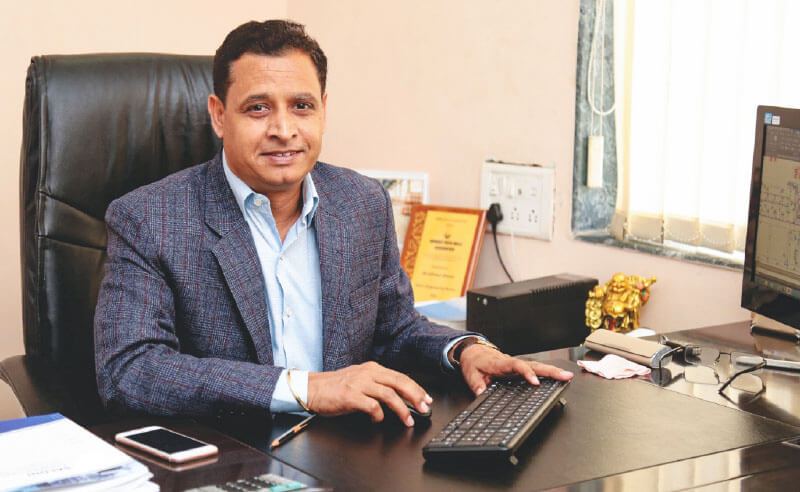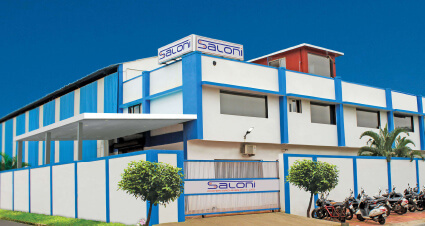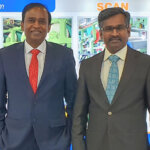“In the paper industry, there are a number of areas where India has exerted its skill to become self-sustaining and there are some which still need attention.”

Excerpts of the interview with Mr. Jaikishan Sharma, Managing Director, Saloni Paper Machines Pvt. Ltd.:
Paper Mart: “Aatmanirbhar Bharat is not about being self-contained or closed to the world; it is about being self-sustaining, self-generating,” PM said with the message that India is walking the path of self-reliance. How do you relate the relevance of this viewpoint for the Indian pulp and paper industry?
Jaikishan Sharma: It is very well said that ‘Aatmanirbhar Bharat’ does not mean cutting strings with the world, but is about being self-reliant and making for the world. In the paper industry, there are a number of areas where India has exerted its skill to become self-sustaining and there are some which still need attention. For example, currently, there are some machinery parts in paper machines like C.I. drying cylinders which are mostly imported from other countries. While the Indian paper industry has the capability of producing them, it requires quite a huge amount of capital with respect to the ROI and risks; hence, it requires support from the government and industrial policy reforms to a great extent.
In addition, the availability of conventional and good raw material like bamboo, wood, etc., has become a real challenge to the paper industry and it can be afforded only by a few mills. Moreover, it also contributes to deforestation and environmental issues. Thus, most of the paper mills have switched to waste paper as raw material which is majorly imported at high prices and ultimately increasing the product price. To overcome this, we, as an association, have to work on waste paper recovery policies and the system of our country. In the current situation, recovery of waste paper is around 38-40% in India which is around 70-80% in many countries. Availability of the domestic waste paper will considerably help the industry to be more economical.
“It is very well said that ‘Aatmanirbhar Bharat’ does not mean cutting strings with the world, but is about being self-reliant and making for the world.”
PM: What do you think are the different strategies and the kind of investment which is required to develop a globally competitive domestic supply chain in the Indian paper industry?
JS: According to us, a major challenge would be to produce equipment and products at a price less or equal to what is already available in the global market with the same quality standards. Usually, strategy of mass production is followed in many countries which cut down the cost to a great extent. Although, our industry is moving towards this direction, it will take some time to attain the same because we have a varied range of demand at every stage of the paper industry from machinery (like design of machines for a very wide range of GSM) to end product which makes it a tailor-made production. Also, if we talk about the end product of the industry being odourless, an appreciable amount of investment is required for installing effluent treatment plants in the paper mills. Further, automation at every stage i.e., from machine manufacturing to producing paper is required to achieve precision and quality within less time. We, at SALONI PMPL, manufacture equipment from headbox to rewinder with the help of completely automated VMC and CNC machines and execute complete projects on DCS with automated features in the supplied machine.

PM: Please outline the recent product developments at your end and the upgradations you have introduced in the recent past at your production unit?
JS: Earlier, there were only a few mills, mostly the corporates which had the advanced and automated machines. However, we have gradually brought those concepts to many other organizations at a very affordable price with the best quality. With the prohibition of single use plastic and development of e-commerce, there is a potential increase in the packaging paper demand. To achieve this, we have designed high speed paper machines including bi-nip & tri-nip press sections for closed draw, unirun in the dryer section, autoloader, dilution in headbox and proper table design for better sheet formation and many more features for easy operation. Also, we have executed completely automatic paper plants, reducing the breakdown and increasing the production of high-quality paper.
PM: Smart manufacturing together with Industry 4.0 is emerging as the next step towards calibrating manufacturing for the future. What is your outlook on this technology-driven approach to monitoring and improving manufacturing performance in the paper industry?
JS: Connecting machines and processes in the paper industry has become very important for optimizing the production. It enables monitoring and automatic controlling that result in a highly efficient process. It gives a better idea of the on-going operation and provides a better customer experience. In our production unit as well, we have machines that are fully automated with monitoring systems to attain high precision and accuracy in our jobs. Many paper mills have also started to adopt the centralized and integrated monitoring and controlling of the complete plant sitting in front of just one screen with the help of IoT and networking.
PM: Modernization of the entire industry will require a huge investment to bring improvement in core competencies such as including a quantifiable increase in productivity, and quality improvement. What kind of trends do you foresee with respect to capacity expansions, quality enhancement, productivity improvements in the sector?
JS: When it comes to modernization and upgradation, customers look for odourless paper, minimum breakdown and operational easiness with considerable increase in the production and improvement in paper quality. A lot of awareness with respect to environment and pollution has been seen in the industry over the past few years for which the effluent treatment plants and pollution control systems have been implemented in the paper plants. This will become a crucial part in the coming years in any of the paper projects at a very initial stage itself. Also, with the increasing speed and capacity of the paper mills, concepts of multi-wires, closed draw and wide nip in the press section have become common along with switching over to automatic operations from manual. Contributing to achieve the above, Saloni PMPL provides engineered solutions in all aspects including increase in productivity, improvement in quality and making the plant more energy-efficient by balancing the steam consumption, water and vacuum balancing of the complete paper machine.



